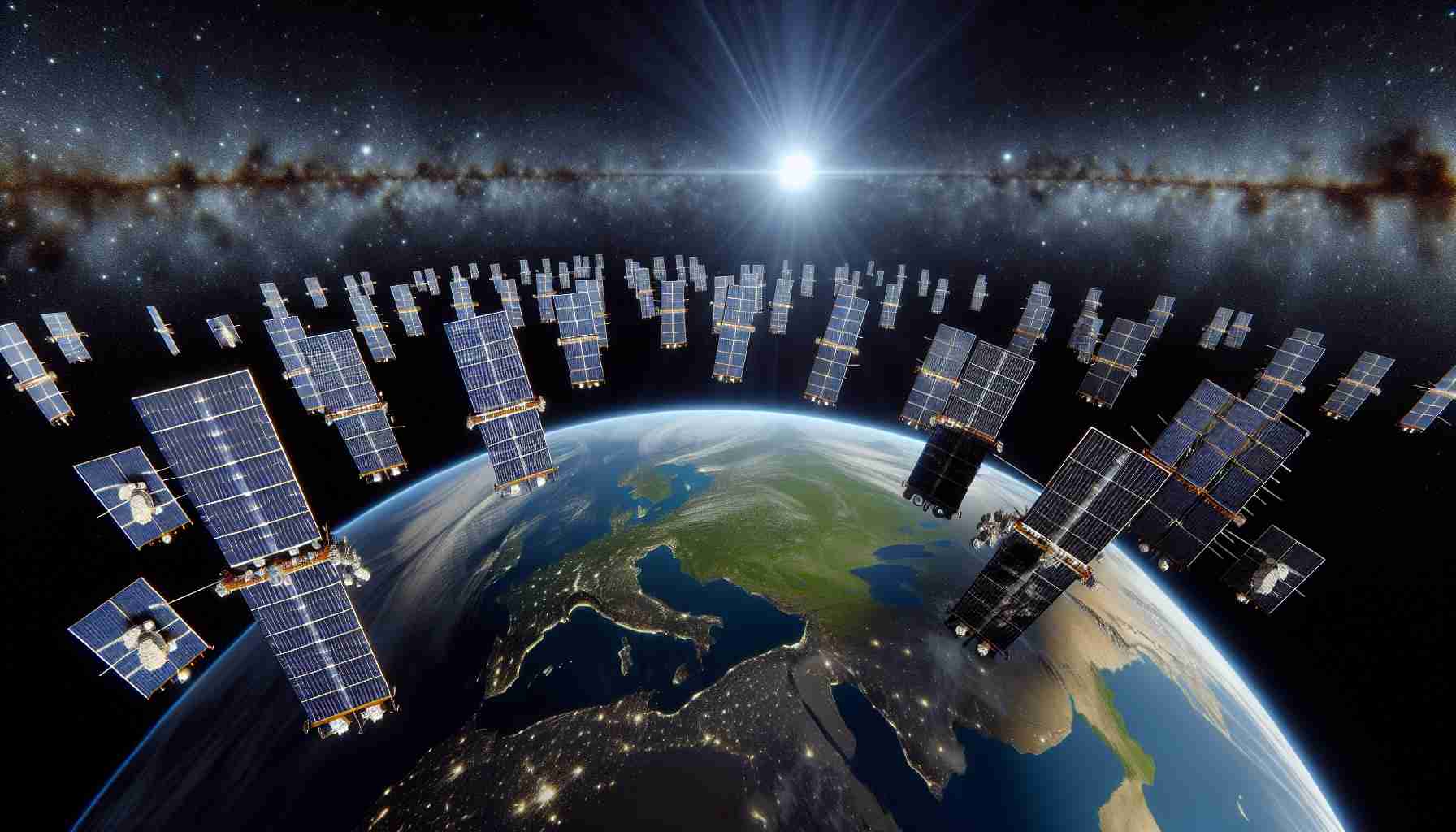
The advancements in satellite technology are set to redefine the value of SpaceX in the high-stakes space race. While recent rocket launches capture public fascination, the real financial power lies in the company’s Starlink satellite network. Founded in 2002 by visionary entrepreneur Elon Musk, SpaceX has garnered attention not just for its rockets but for its ambitious goal of making life multi-planetary and revolutionizing global internet access.
Recently, SpaceX successfully demonstrated its engineering prowess with a test of its massive Starship rocket. This remarkable vehicle is designed for rapid reuse, aiming to facilitate cost-efficient missions to the Moon and Mars. However, its role in bolstering Starlink’s internet service may ultimately prove more impactful on Earth. Currently boasting around 6,400 satellites, Starlink is set to provide swift internet connectivity across the globe, regardless of location.
Analysts predict that SpaceX’s valuation might soon rival that of its more established counterpart, Tesla. With an estimated worth of $180 billion, SpaceX’s growth is primarily driven by the success of its satellite service. Revenue from Starlink has surged, with projections indicating a remarkable jump from $1.4 billion to $6.6 billion within a year. As SpaceX orchestrates partnerships across various industries, the role of satellite technology in driving profitability and innovation will continue to expand, solidifying SpaceX’s standing in the aerospace sector.
The Rising Importance of SpaceX’s Starlink Satellites: A New Era of Global Connectivity
As we move deeper into the 21st century, the demand for reliable internet connectivity has become an integral aspect of modern life. SpaceX’s Starlink program aims to meet this demand through its low Earth orbit (LEO) satellite constellation, which is poised to bridge the digital divide in underserved areas. With its ambitious deployment of thousands of satellites, the program signifies not only a technological advancement but also a shifting paradigm in how global internet access is perceived and delivered.
What are the critical questions surrounding Starlink?
1. How does Starlink’s technology work?
Starlink operates by deploying thousands of small satellites in low Earth orbit, where they communicate with ground stations and user terminals. This configuration allows for lower latency compared to traditional satellite internet services that rely on geostationary satellites located far above the Earth.
2. What are the potential impacts of Starlink on global internet access?
Starlink has the potential to provide internet access to remote and rural areas that previously lacked connectivity. This could lead to significant socio-economic benefits by enhancing access to education, healthcare, and business opportunities in underserved regions.
3. What are the major challenges faced by Starlink?
The deployment of Starlink’s satellites raises several challenges, including concerns over space debris, potential interference with astronomical observations, and regulatory hurdles in different countries. Managing the growing issue of space debris is especially crucial as more satellites enter orbit.
Key Challenges and Controversies
One of the major challenges facing Starlink is the issue of space debris. With thousands of satellites being launched into orbit, there is a growing concern about collisions and the sustainability of outer space environments. In response, SpaceX has incorporated advanced propulsion systems in its satellites to maneuver and reduce the risk of collision.
Another controversy involves the impact of Starlink on astronomical research. Astronomers have raised concerns about the brightness of Starlink satellites, which could interfere with telescopes and observational data. SpaceX has taken steps to mitigate these issues, such as experimenting with sunshields and asking operators to schedule launches during times that minimize interference with astronomical observations.
Advantages and Disadvantages of Starlink
Advantages:
– Global Coverage: Starlink provides internet access across vast and remote areas, enabling connectivity where traditional infrastructures cannot reach.
– Reduced Latency: The low Earth orbit design allows for lower latency, making it suitable for latency-sensitive applications like online gaming and video conferencing.
– Rapid Deployment: The modular nature of Starlink satellites allows for quick and efficient launches of large numbers of satellites.
Disadvantages:
– Cost: While the service is affordable for many, the initial setup cost for the hardware and monthly fees may remain a barrier for some users, particularly in developing regions.
– Regulatory Challenges: Different countries have varying regulations regarding satellite internet services, which can impede global rollout.
– Environmental Concerns: The cumulative impact of satellite launches and the potential for space debris pose long-term environmental challenges.
In conclusion, SpaceX’s Starlink satellites are not just a technological innovation; they represent a significant shift in how the world approaches internet connectivity. With ongoing advancements and addressing challenges head-on, Starlink could play a starring role in global connectivity in the years to come.
For more information on SpaceX and its initiatives, visit SpaceX.



